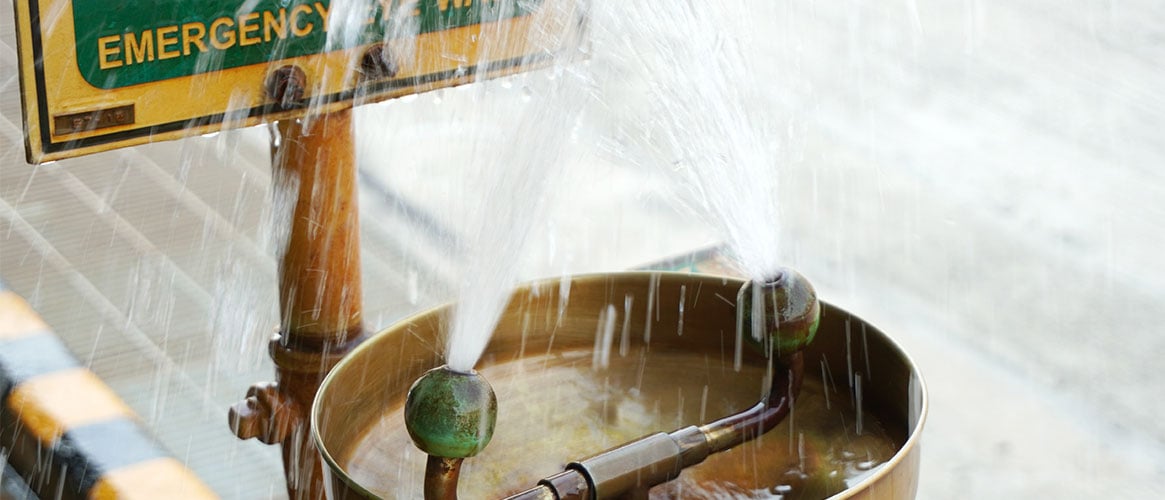Emergency eyewash stations are required when working with dusts, corrosives, or chemicals that can cause severe eye damage or vision loss. The eyewash provides a steady flow of water to flush harmful substances out of an injured worker’s eyes. It’s important that all of your workers are properly trained and know how to use an emergency eyewash station.
What your employees need to know about emergency eyewash stations
When is an emergency eyewash required at your worksite? If your workplace uses any chemical that is toxic by absorption or can cause corrosion, severe irritation or permanent tissue damage requires an eyewash. You should also review the first aid and controls section of safety data sheets (SDS) to determine if an eyewash is needed.
Where are the stations are located? The path to the emergency eyewash station must not have any obstructions such as a door, equipment, furniture, or other objects and located within 10 seconds of work areas where chemicals or substances that can injure the eyes are present.
What type(s) of emergency eyewash stations are available? Emergency eyewash stations can be plumbed with potable water or free-standing units can be filled with potable water, disinfected according to the manufacturer's instructions. Compliant, free-standing eyewashes contain at least 9 gallons of water and deliver 0.4 gallons of water per minute for 15 minutes. Small, first aid eyewash bottles cannot be used in place of an eyewash station.
How do employees use the emergency eyewash stations? Each eyewash has a handle, knob, or other mechanism that employees use to activate it. Once this is done, the water stays on until it’s turned off. As referenced above, the water needs to flow for at least 15 minutes.

